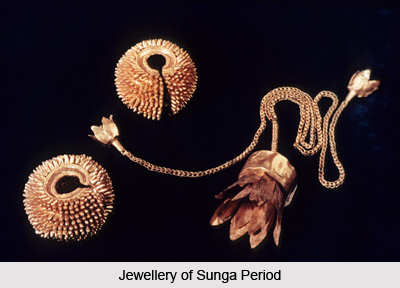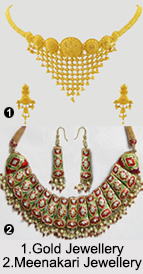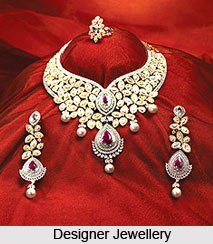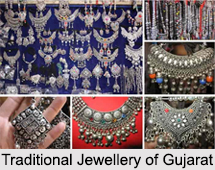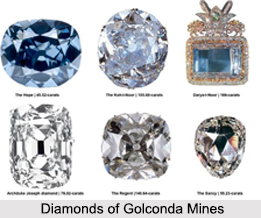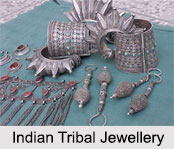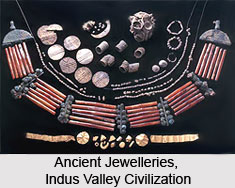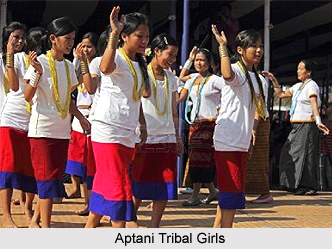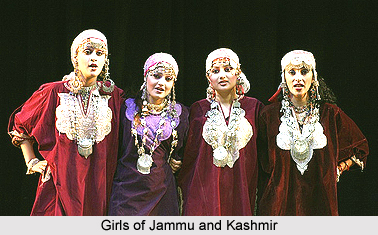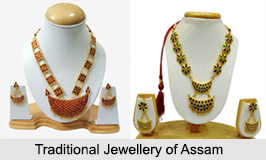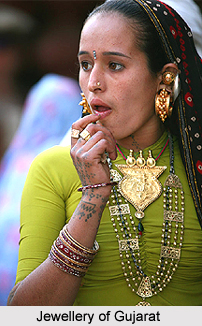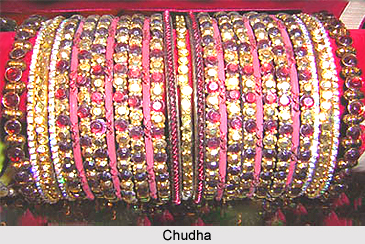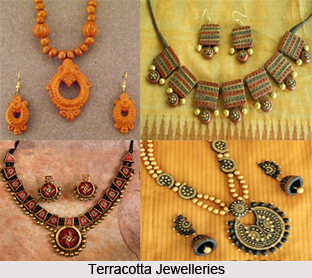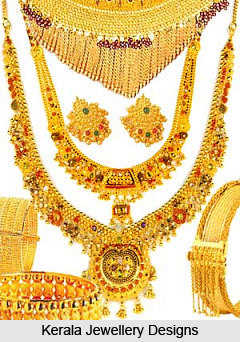 The jewellery of Kerala is specifically noted for its artistic perfection. Each caste or community had its typical ornament. An ornament of the Nair women was Nagapadam or serpent hood, so called after the shape of the pendant. An ear ornament called Toda, a double convex disc, is worn after dilating the earlobes. Mukkuthi is an ornament for nose and Kappu for the wrist. The most important traditional ornaments for the neck are Addyal, Yantram, Avil Mala and Puli Nakham. Cheruthali, Kasu Mala and Oddyanam are other traditional ornaments. A kind of heavy guilt brass ring called Mekka Motiram was worn by Christian women after boring their ears in several places. Ottezhapathakkam, Kombu, Tala etc., were also typical Christian ornaments. Most of these traditional ornaments have become quite difficult to find today. However, Kerala women are still found in large number of ornaments, and jewellery items like necklace, bangles, chains, earrings, studs etc., in a variety of attractive designs.
The jewellery of Kerala is specifically noted for its artistic perfection. Each caste or community had its typical ornament. An ornament of the Nair women was Nagapadam or serpent hood, so called after the shape of the pendant. An ear ornament called Toda, a double convex disc, is worn after dilating the earlobes. Mukkuthi is an ornament for nose and Kappu for the wrist. The most important traditional ornaments for the neck are Addyal, Yantram, Avil Mala and Puli Nakham. Cheruthali, Kasu Mala and Oddyanam are other traditional ornaments. A kind of heavy guilt brass ring called Mekka Motiram was worn by Christian women after boring their ears in several places. Ottezhapathakkam, Kombu, Tala etc., were also typical Christian ornaments. Most of these traditional ornaments have become quite difficult to find today. However, Kerala women are still found in large number of ornaments, and jewellery items like necklace, bangles, chains, earrings, studs etc., in a variety of attractive designs.
The artisan traditions of Kerala also catered directly to personal adornment including decoration of the idols worshipped in temples. These are jewellery, handlooms and embroidery. Jewellery in Kerala seems to have originated in connection with ritual and magical beliefs, though later it developed its aesthetics as an independent tradition. Rings were made in the old days out of the seeds of the Pala tree which is sacred to the patron goddess of the Hindus of Kerala. Moreover, rings were also made of tiger-claws and the teeth and hair of elephants. It was believed to be magical protection against wild animals. The memory of the first human settlements which involved clearing the forests and fighting the wild animals that infested them is preserved in these traditional amulets. Even when these unusual materials were used, the affluent used to set them in gold or silver.
Later, a tradition of work in precious metals and stones evolved in the state. The flora of the milieu insensibly affected the designs. Gold was cast in the shape of pepper seeds or rice flakes and worked into chains. Green stones were delicately cut to the contours of the mango in miniature to form necklaces. The appeal of the traditional designs in the jewelleries of Kerala has been able to stand competition from the sophisticated designs of the modern type that has come into vogue during the last decade or so.



